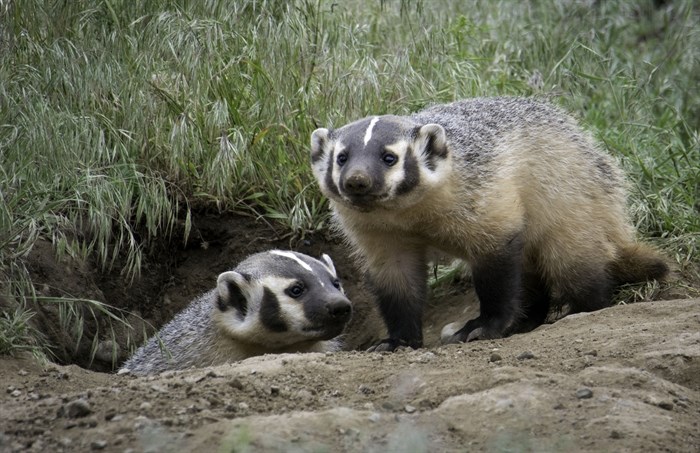
FILE PHOTO - The American Badger
Image Credit: Pixabay
November 12, 2022 - 6:03 PM
By some estimates, there are only 350 breeding American badgers in B.C. but a research group is hoping to determine more accurate numbers with the endangered population.
Ceryne Staples is an ecosystems biologist with the Simpcw Resources Group and project lead behind a new study that is a collaboration between the Simpcw First Nation, Estsek’ Environmental, the B.C. Badger Recovery Team and Ministry of Environment biologists.
“The last estimate of badger numbers in the Thompson region included 35-50 mature adults. Unfortunately in 2022 alone, six badgers have died on area roadways,” she said. “It’s alarming, it’s crazy and I think most of them were smoked on Highway 5.”
The study aims to determine how many badgers are left in the region. One of the main factors in the declining population is roadway mortality, she said.
A North Thompson woman said a badger has been living on her property since last year but she’s concerned as it’s close to the highway. Another sighting of a badger was reported on the Yellowhead Highway near Barrière this past summer.
READ MORE: Rare badger moves into North Thompson woman's yard, she doesn't know what to do with new neighbour
Working with landowners is really important as the team will be finding the endangered badger burrows and set up hair and camera traps this spring, Staples said. Badger DNA will be collected from the hair.
Last year, the group conducted work last year finding the badgers and now they’re encouraging residents to report any badger sightings to their hotline.
When she found a dead badger near Louis Creek along Highway 5, it got her thinking about what was happening one of the largest and she asked to start a study on how many are left.
“There’s been more sightings in the North Thompson recently," she said. The badgers may be moving northward but it's more likely they're moving into the North Thompson Valley from the Cariboo Plateau.
Roger Packham, a retired Cariboo biologist, is also involved with the project. For years, Packum has been studying badgers in B.C. and the group has applied for additional funding for Packum to conduct a wildlife culvert assessment along Highway 5 and additional busy side roads including Tod Mountain Road to Sun Peaks Ski Resort and Dunn Lake Road north of Barrière.
“Cleaning out these culverts is one of the best things you can do for immediate solutions for mortality on the highways,” Staples said. “These badgers do cross these highways and roads like six, seven times a night, their home ranges are huge.”
If all goes well, the culverts will be cleared out next spring and hair snag and camera traps will be set up outside of burrows for the following two years, she said.
The Simpcw First Nation has been trying to get the Dunn Lake Road widened for decades, so Staples said it’s an opportunity to examine the road before construction begins to install wildlife culverts. Any culvert installations will take place when the Ministry of Transportation gets to the roadwork and it's a long-term plan for the group.
Badger sightings can be reported online through the B.C. Badger Recovery Team’s website.
- This story was updated at 8:54 a.m. for clarity.
To contact a reporter for this story, email Carli Berry or call 250-864-7494 or email the editor. You can also submit photos, videos or news tips to the newsroom and be entered to win a monthly prize draw.
We welcome your comments and opinions on our stories but play nice. We won't censor or delete comments unless they contain off-topic statements or links, unnecessary vulgarity, false facts, spam or obviously fake profiles. If you have any concerns about what you see in comments, email the editor in the link above.
News from © iNFOnews, 2022